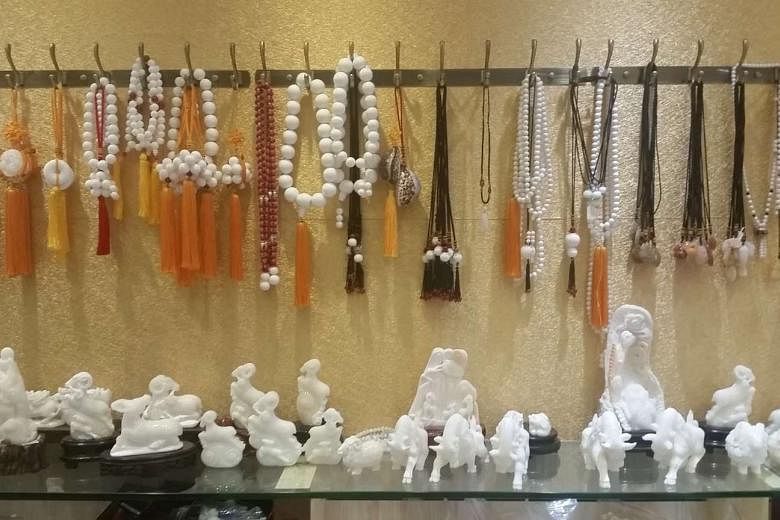Talk to any local in Tanmen about its transformation from quiet fishing village to buzzing tourist site and they will invariably point to two things: Xi Jinping and endangered giant clams.
But while the Chinese president's historic visit in 2013 momentarily shot the town to prominence, it is the popularity of giant clam handicrafts that has driven Tanmen's economy the last few years.
Touted as one of Buddhism's "seven treasures", the shell of giant clams, or che qu as they are known in Chinese, can be fashioned into ornaments or jewellery.
The surge in interest among collectors have sent the price of a metre-long giant clam skyrocketing - from 2,000 yuan (S$418) in 2012 to some 80,000 yuan in 2014.
During the same period, revenue from Tanmen's tertiary sector - more than 80 per cent of which is dominated by giant clam handicrafts - grew five times to hit 623 million yuan.
This led to a rush of people into the industry. There are 460 giant clam handicraft shops in Tanmen, with almost every shop along its main 1 km long thoroughfare selling the items.
By some estimates, the industry supports nearly 100,000 people, including those who moved from other towns to Tanmen for work.
Shopowners told The Straits Times that prices of giant clams differ according to its translucency, density and colour.
"The more translucent and dense pieces fetch higher prices, as do coloured ones," said shop assistant Li Xiadan, 23. Her family used to sell toys, but switched to giant clam handicrafts more than two years ago.
In her shop, the cheapest necklaces and bracelets made from the shell of the giant clams cost just 20 yuan, but a large carved ornamental piece can fetch 120,000 yuan.
Out at sea, a growing number of Chinese fishermen have begun specialising in harvesting giant clams despite a ban.
However, the central and local Chinese governments have turned a blind eye to the trade at times due to rising tensions in the South China Sea, noted associate research fellow Zhang Hongzhou from the S. Rajaratnam School of International Studies (RSIS), an expert on China's fishing industry and maritime security.
China encourages its fishermen to head out to South China Sea as part of its strategy to lay claim to the disputed waters.
Faced with mounting ecological concerns, authorities began cracking down on giant clam harvesting in earnest last year (2015). Fishermen told The Straits Times they do not harvest them anymore, although the products are still openly sold in Tanmen's shops.
Having changed the face of Tanmen, the industry now faces an uncertain future, said one fisherman.
"But it's fine," he said. "Many people have already made their fortunes and are driving sports cars now."
This story is part of a three-part series on the South China Sea being published in The Straits Times from April 3 to 5. For more stories go to: http://str.sg/Zv2i


